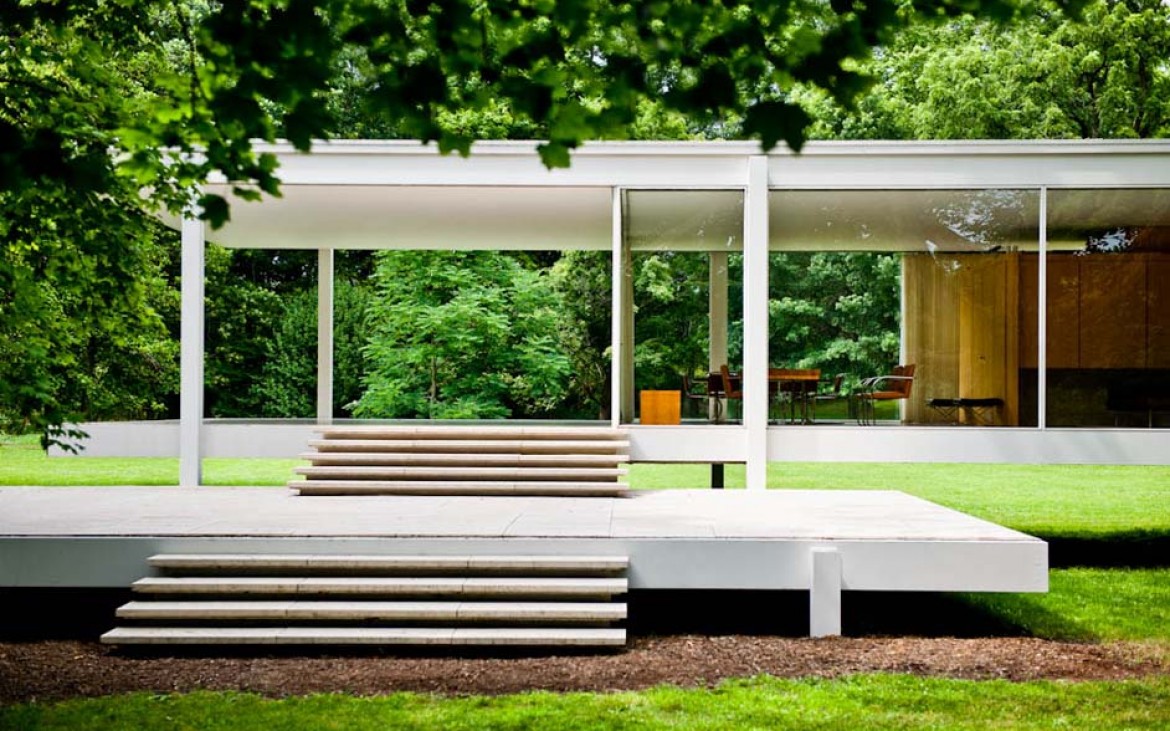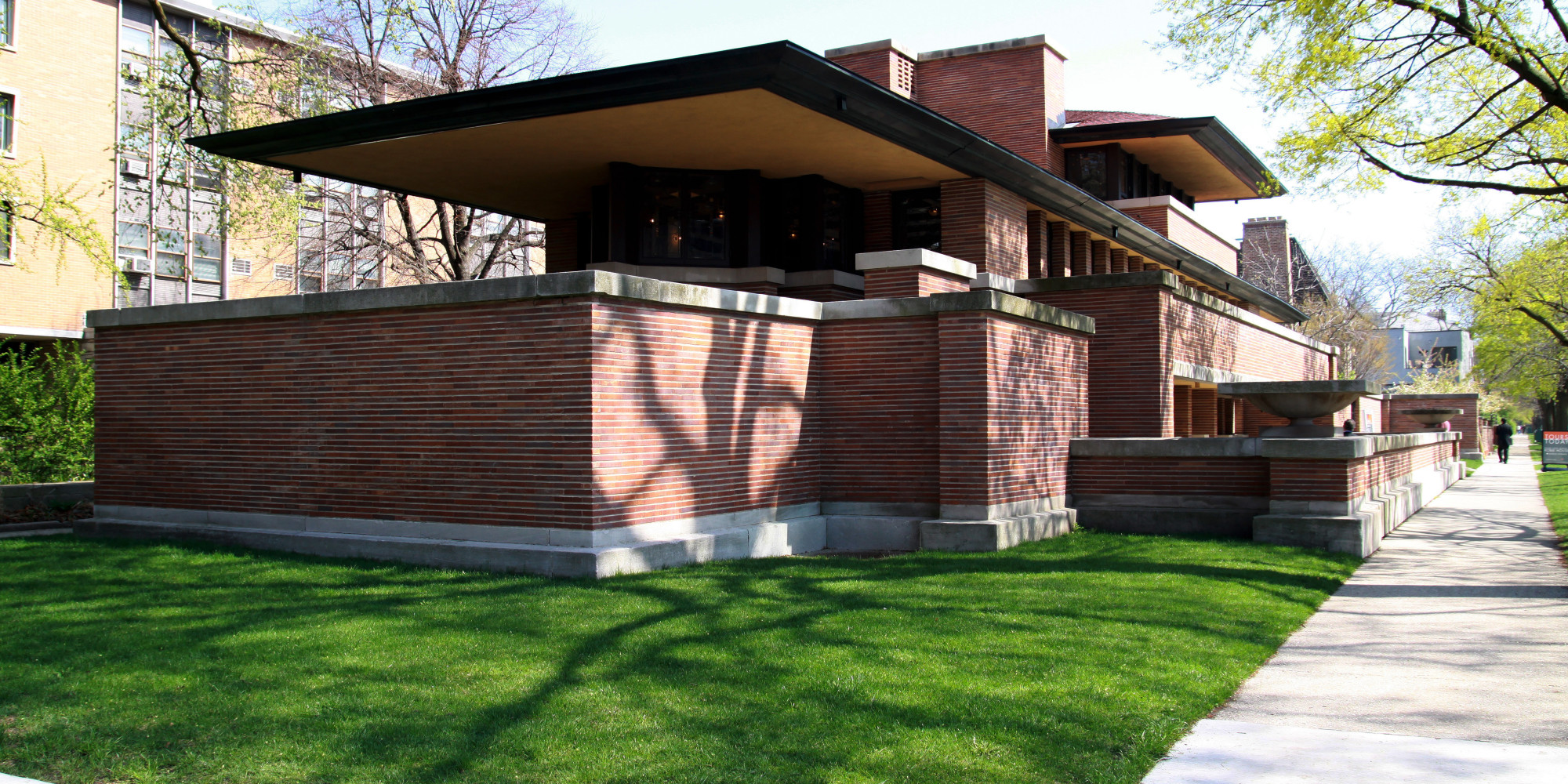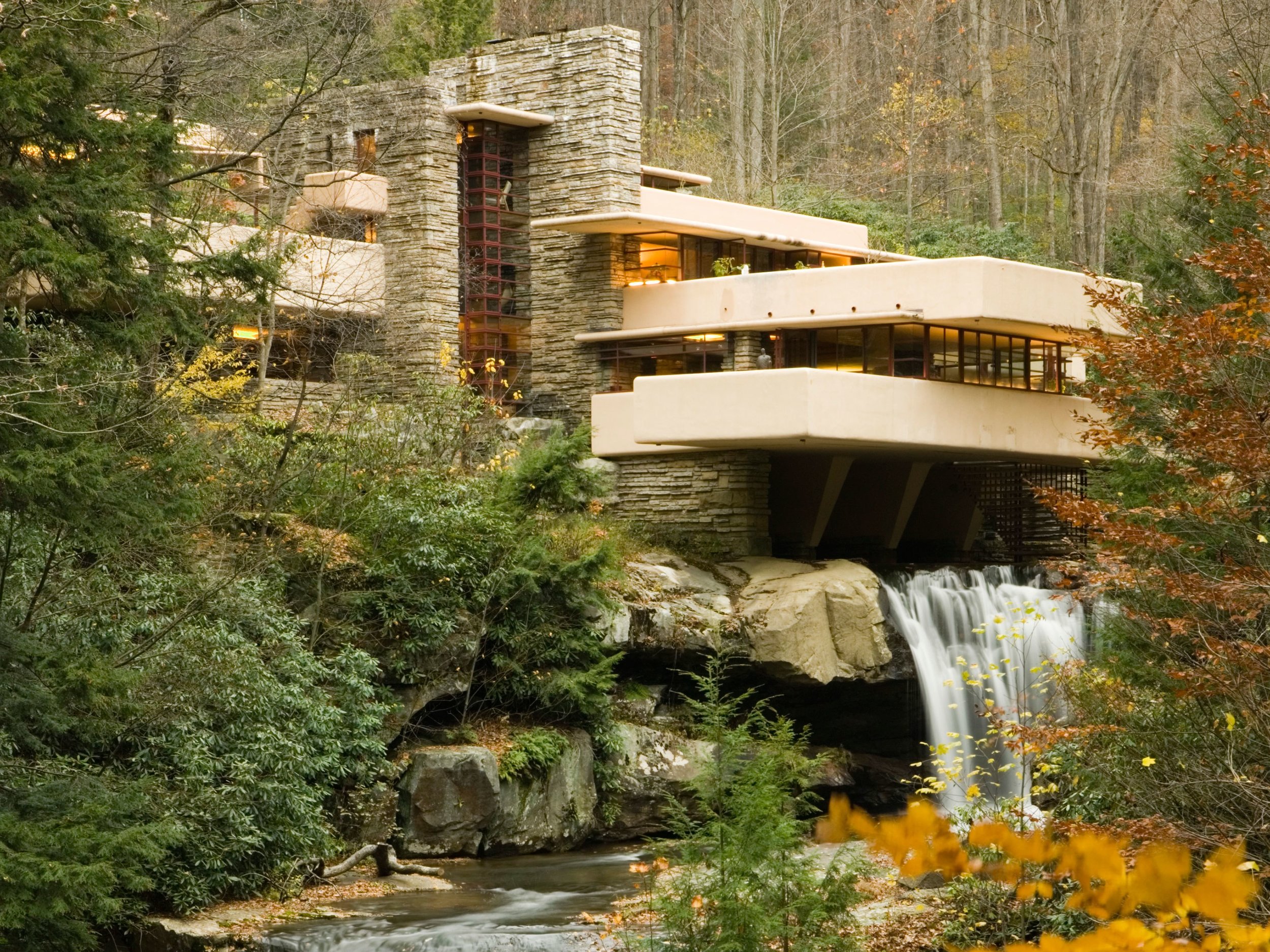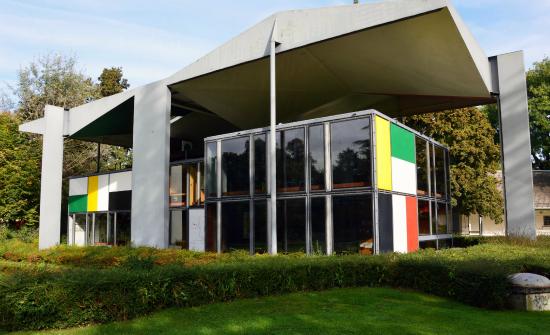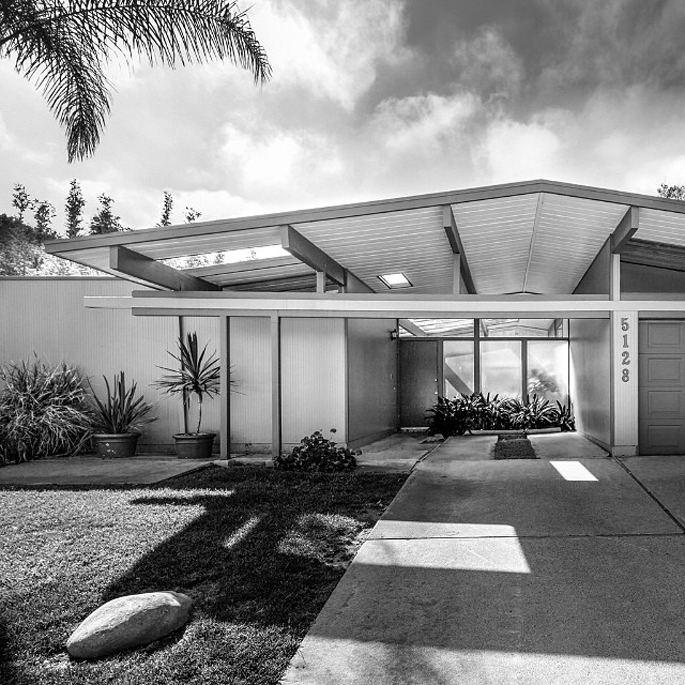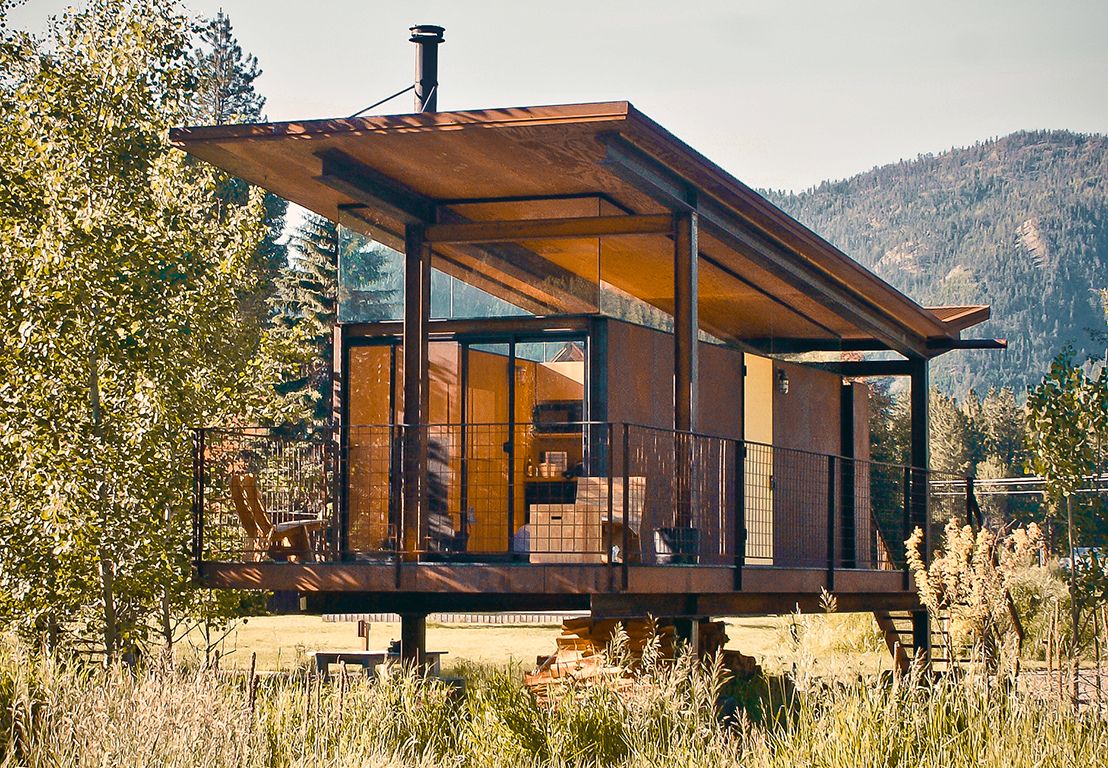why we need The House to be important....even when they are ridiculous.
Love them, hate them, confused by them, inspired by them - however you look at it, they all make you THINK.
Certainly these houses have gotten plenty of opinions thrown at them over the years. Eames, Corbu, Kundig, FLW, Mies, Eichler, Johnson the list goes on well past the ones I’ve included here. This week, Architectural Record ran an editorial by Lance Hosey, focused on the fall from importance of THE HOUSE in influential architectural design. I loved the article, but then today I see an article from Curbed Chicago about the listing of a particular 1990’s house in the Chicago suburbs, that is for sale, but is having trouble commanding it’s asking price. That house, in particular, represents to me a lot of things I ‘don’t like'. Yes, those are my opinions, and judging by the difficulty this composition is having in finding a buyer, it’s an opinion shared by others as well. However, I am aware that many people take issue with the houses I’ve pictured above, several of which I quite like for various reasons. We are all entitled to our opinions, and what this all made me think about is that whether we like these houses or not, we have a responsibility to THINK about why we love or hate them, and that’s where they retain so much of their value. Houses we hate don’t exist for us to just take pictures of them and make a living as an internet troll, putting snarky and bitchy comments on photos in an attempt to make ourselves feel better, then enjoy the comments of other bitchy people that chime in. We need to take it a step further and admit that even the most criticized houses are still someone’s art, and if they made it to a photo in a magazine somewhere, whether it be 1 or 100 of them, it’s because they make us think. (If the home is NOT in a magazine or any publication voluntarily, the owners didn’t ask for opinions, and you have to park in front of their house to take a photo of it, your opinion in the matter isn’t valid or asked for.) Someone had the money, they determination, the vision, the money, the passion, the faith, the money, and the sheer willingness to give it a go on an idea and make it a permanent feature on the landscape. Time sifts the court of opinion about the houses we are discussing into a majority of YES or NO, but that also means we are stuck with them as examples of design for a given moment of time.
Personally i’m a big believer in many of the styles that came about in the last century, because so many of them were born of the theory that we can - and should - take a minute to study how we live in our homes, how and why we use building materials, and how our homes impact the world around them. Prior to 1900-ish, houses were mainly shelter, and their forms were limited by available materials, fire issues, local climates, and lack of engineering prowess due to having to be built by hand. Once we had the freedom to build and plan basically however we wanted, I see how human nature took over and two schools of thought came into play. In one, the architect and to some extent the clients, took time to examine the power of that freedom and how best to use it to distill and perfect architectural principles of scale, proportion, utility, and capacity of materials. The other school of thought came from the ‘WE CAN DO WHATEVER WE WANT!! WOOHOO!!!’ perspective. It’s from that camp that I see a lot of the ‘NO’ decisions of that sifting of the court of public opinion over time. I’ll keep most of my personal opinions to myself here, but I will say that if you throw a bunch of shapes together that can’t support each other on a basic structural level, the end result is going to be icky.
HOWEVER, we have to feel a bit lucky that we have so many attempts and experiments at redefining ‘home’ from the last 150 years or so to help us learn how to do this better. I want to be sure that when I look at a house that i’m supposed to consider ‘famous’ or ‘groundbreaking’ and I want to recoil from it and hide, that instead I sit down and appreciate it for what it is, and use it to push me to think hard about WHY I don’t think it works. When I see something that is ‘famous’ and ‘groundbreaking’ and I want to faint from loving it so much, I have to do the same thing - feel it out and figure out WHY I think it works so well. Then I have to put all of these impressions together as I decide what I would want to create, what I would want to leave as my permanent stamp on the landscape, should I be so lucky to someday have that critical piece of the puzzle - money - without which I will just forever be writing and thinking and never have a chance to find out if people, including myself, love or hate my own work.
My last thought on this is that I want to be very clear that personally I would take a discombobulated and senseless experimental mess of a house over the pile of conformity that dominates residential architecture around me currently. In the AR article, a stat is quoted that 2% of American houses are designed by architects these days. 2%. I guess the rest are basically exercises in either pure cost effective garbage(tract housing, pick your plan from THREE options!), or contractor versions of Pinterest compilations of boards full of images sourced by HGTV fans and other safe design spaces. If that is what gets attention, if that is what people will aspire to, the whole questioning nature of home design that was ushered in 100+ years ago will basically be marginalized for quite some time. The only considerations people will pay heed to are the Pantone color of the year, or what style the latest attractive-enough-for-TV HGTV host is promoting. I have nothing against the color of the year (thank goodness color gets any attention!), nor do I have a problem with the current trends - I love a black steel window and chevron wood floors. It’s just that they are ALL that is getting traction, the range of aspirational design is so so so narrow. I do my best to seek out interesting homes and designers that are getting published around the world for producing dramatic, beautiful, well engineered homes, but those homes are being promoted into an echo chamber, published in peer-focused magazines and the like. Perhaps if I lived in a less isolated suburb I would have a different take on this, and if I find a place that has a more progressive/aggressive/risky/creative housing scene, I will promptly correct this piece! My searching has seen some bright spots in places like Austin, TX, New Zealand and Australia, and the Pacific NW, Mexico, and even bits in the UK, but the homes I do find are usually extraordinarily expensive, not really part of the movements started by Eichler and Wright in the middle 20th century to expand the choices of everyone in the market for a home.
I do acknowledge that a lot of my writing here is borne from my personal frustrations, but I think that in general people need to challenge themselves in ways that help us figure out what we REALLY want or need. We can't do that by just surrounding ourselves by whitewashed interiors and georgian revival homes - where we live helps shape how we think and how we push ourselves in many aspects of our lives, even if it is subconsciously. Think of the recent chatter around helicopter parenting, and the effects on young minds when they aren’t given enough opportunities to independently problem solve, to fail and recover, to feel uncomfortable or bored. We are doing that to society as a whole by encouraging ourselves to settle for uncreative places in which to live and learn.
